New Studio Review: Strange Weather, Brooklyn
Generally, I try to stay objective when I write about new studios. But when it comes to East Williamsburg’s Strange Weather recording, I just wouldn’t be telling the whole story if I neglected to mention that it’s one of my favorite studios in New York. By extension, I suppose that makes it among my favorite recording rooms in the world.
Everything about Strange Weather is likeable in my book: The design, the people, the gear, the philosophy. Even the rate is fair. The only thing I don’t like about this place is that the more I talk about it, the more booked up it seems to get, making it increasingly complicated to schedule sessions there for myself. The last time I booked a new project, I had to settle on a date almost 8 weeks out. But like most great things, it’s well worth the wait.
Of course, I should hardly complain. If anyone knows about waiting for great things, it’s Strange Weather’s owner, Marc Alan Goodman. This new studio, which finally opened early this year, was almost three years in the making. This long lead-up time was the product of countless unexpected setbacks and endless red tape that Goodman dutifully documented in a construction blog for this very publication.
Patience though, pays off. His newest room, designed by acoustician Wes Lachot, is the culmination of a line of six studios all by the same name, and it puts any of those earlier incarnations to shame. Goodman, who had spent the past decade engineering, assisting, and amassing esoteric high-end gear that he stuffed into overflowing equipment racks at a succession of cramped, makeshift studios, finally has a little sonic palace to call home for the long haul.
As far as affordable mid-sized studios go, Strange Weather is one of the most uncompromising rooms I know. It has a live room capable of accommodating more than a dozen musicians comfortably, plus two full-sized isolation rooms that might easily fit a half dozen more.
It’s a tracking space that sounds alive and pleasantly reflective while remaining malleable and remarkably well-controlled. Roll out a few of the extra-thick, windowed gobos and you can cordon off bits of the main space with alarmingly little bleed. Put them away and you have an inspiring, open space with an even, bright resonance, thanks to a calculated blend of wood and brick and strategically placed absorption.
The sight-lines here are phenomenal. Truly a best-case scenario for live bands. The same goes for the amp and instrument selection. This is a studio that seems to have just about everything, from vintage Ludwig drums and an army of tube combos, to keyboards including an Optigan, a Wurlitzer, and a shockingly pristine Mellotron – the original tape-based sampling keyboard.
There are not one, but two pianos: A complex, well-weathered 1907 Steinway upright just dripping with personality, as well as a bright, clean and articulate modern Yamaha grand. There’s even a vibraphone, celeste, and a set of full-scale orchestra bells.
On the other side of the glass, things are no different. Strange Weather’s control room is one part laboratory, one part playground for producers and engineers.
It’s impossible not to be immediately impressed by the console: A spanking new 48-channel API desk with full-fledged automation, stuffed full of flexible, fantastic-sounding parametric EQs from API and Avedis (as well as some powerful graphic EQs from Aengus – a real sleeper of a model that has become a fast favorite.) All this feeds a Burl Mothership A/D-D/A system, a transformer-based hulk of a capture device that stands among the smoothest, fullest, and most organic-sounding digital converters I’ve encountered.
The really fun stuff though, can be found inside (and in some cases on top of) the equipment racks. There’s the ADL 670, the faithful Fairchild remake by Anthony DeMaria, as well as vibey old tube compressors from Collins, Federal and Gates. You’ve also got at least three tape echoes, a couple of oil can delays, an Elysia Mpressor, an original Eventide H3000 and a whole rack full of Neve channel strips.
More than any one piece of equipment, what I like most is that Strange Weather is a place of such dichotomies and extremes.
Here, the vintage cohabitates with the modern: There’s a classic old EMT plate as well as a Bricasti reverb – easily among the most-lauded digital processors on the market today. The factory-fresh mingles with the homespun: Some of Goodman’s handmade reissues, like the “SW-3A” and “SW-76” can be found among the conventionally pedigreed equipment. And even lo-fi and hi-fi share center stage: In addition to some of the finest signal paths imaginable, Strange Weather is stuffed to the gills with unconventional sound manglers, like a preamp used by FAA announcers to drive grungy mid-century squawk boxes.
Goodman, only half-jokingly, tells me that the official Strange Weather motto is to “capture everything pristinely as possible – and then run it through a distortion pedal.”
The most essential piece of gear however, may be the control room itself. The experience of listening to music in Strange Weather is more like hearing it in a mastering studio than a traditional recording space. It’s so astonishingly well-balanced in fact, that engineers often use nothing but the mains for playback. There’s a pair of NS-10s lying about for when folks demand them, but often enough Goodman keeps them stored on the floor underneath the console, out of the way of the sight-lines and soundstage. There are few rooms where I’d trust recording or mixing on the mains, but at Strange Weather, it just seems to work.
Thanks to Wes Lachot’s painstaking balance of tuned bass traps, broadband absorbers and heavy diffusion, the frequency response is remarkably consistent throughout the room, which means everyone in the room can get a clear picture of what’s going on. It’s even possible to make critical listening decisions from the couch, which is all but impossible in most studios.
Despite all this, Goodman has somehow managed to keep the price point low, and this is reflected in the volume of bookings, as well as the types of bands that come through. Perhaps the person who keeps this studio busier than anyone is house engineer and newly-minted studio partner Daniel James Schlett, who’s been landing a lot of work with the kinds of young, local Brooklyn bands that Pitchfork writers tend to follow and even rave about: DIIV, Amen Dunes, Friends, Total Slacker, The Men. There have also been artists like TEEN, Janka Nabay, and Luke Temple of Here We Go Magic, who brought in his newest home-recorded solo album for mixing.
In an ideal world, we’d have more studios like this one: Uncompromising yet accessible, rigorously designed but comfortable, well-appointed yet affordable, professional but laid back, friendly yet cool. If you thought the bar for New York recording studios was pretty high already, feel free to strap your stilts on. It just got raised.
Justin Colletti is a Brooklyn-based audio engineer, college professor, and journalist. He records and mixes all over NYC, masters at JLM, teaches at CUNY, is a regular contributor to SonicScoop, and edits the music blog Trust Me, I’m A Scientist.
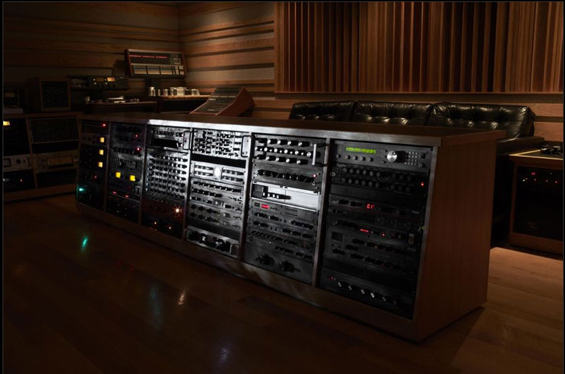
One of three desks of rack gear in the Strange Weather control room. More photos here.
Please note: When you buy products through links on this page, we may earn an affiliate commission.







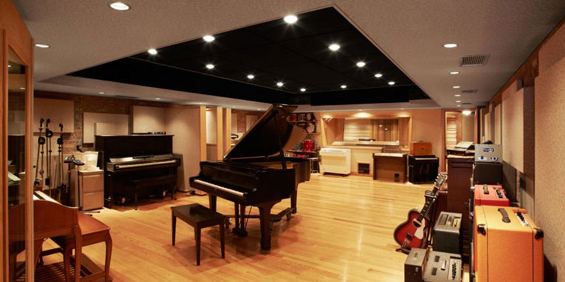
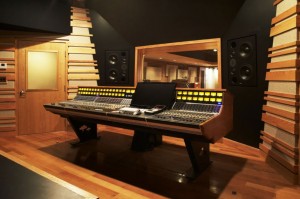
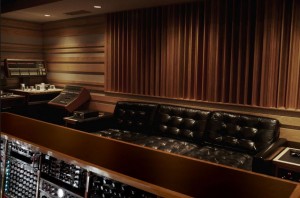
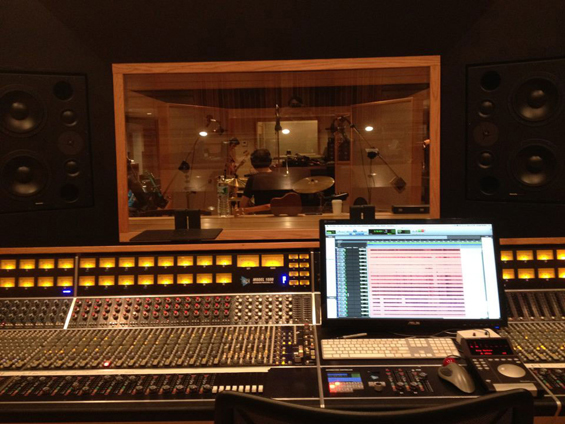
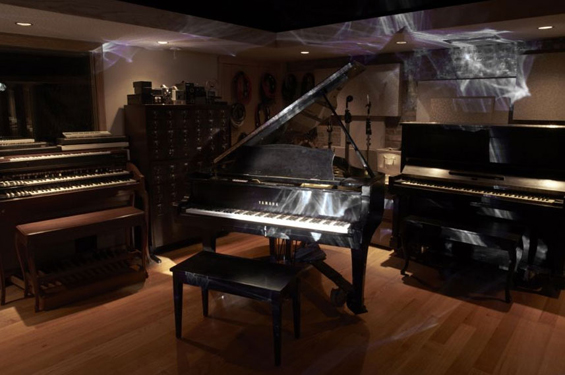
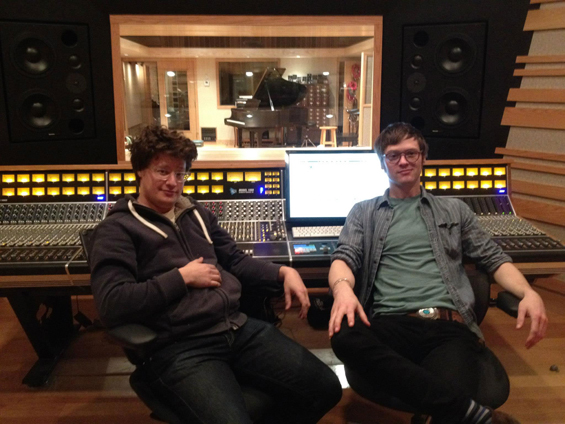
Daniel McLaughlin
May 9, 2013 at 3:20 pm (12 years ago)No pics of the gear racks? wuh??? rather then show you a picture of a naked lady let me just describe it. feeling gypped huh? well, so am I. So am I 🙁
Brian Charles
May 9, 2013 at 6:17 pm (12 years ago)Place looks great Mark! I can’t wait to see it in person sometime!
Strange Weather
May 14, 2013 at 2:52 pm (12 years ago)Just a thought…. Try strangeweatherbrooklyn.com
Strange Weather
May 14, 2013 at 2:55 pm (12 years ago)Thanks Brian! Come by any time. I would be great to see you. I hear awesome things are happening up at Zippah!
Roy Silverstein
June 5, 2013 at 4:27 pm (12 years ago)So awesome! If you’re on the West Coast and you want to experience a Wes Lachot room, my studio, Rarefied Recording, will be available sometime this summer. I’m just putting the finishing touches on it now. It’s no Strange Weather, but it has the classic Wes Lachot Control Room design. I’ve only got a Facebook page for now. Expect a website in the Summer or Fall. http://www.facebook.com/RarefiedRecording